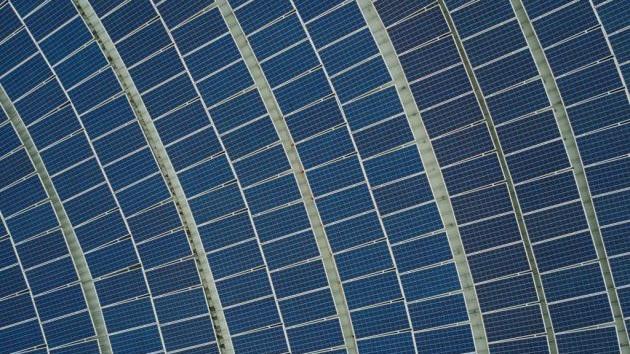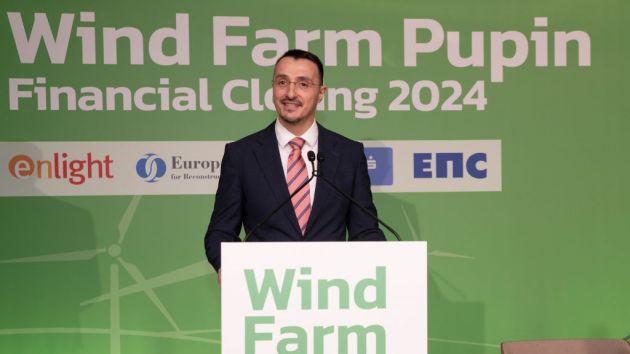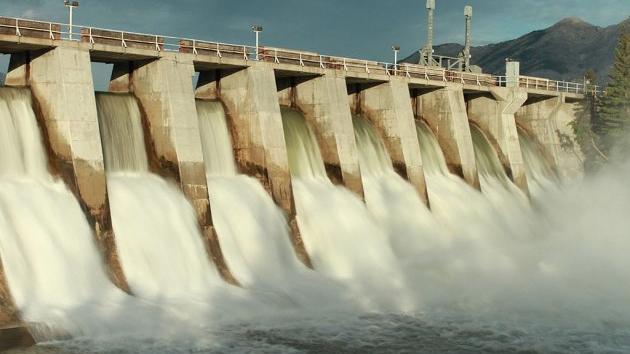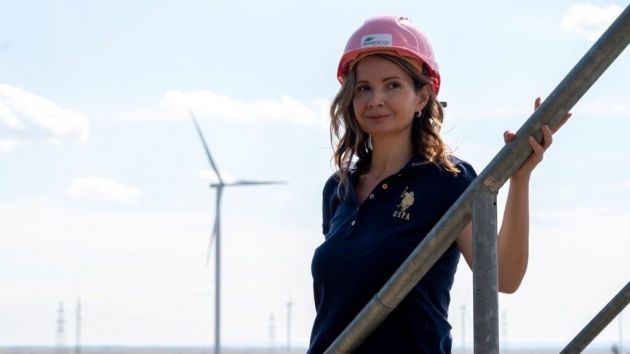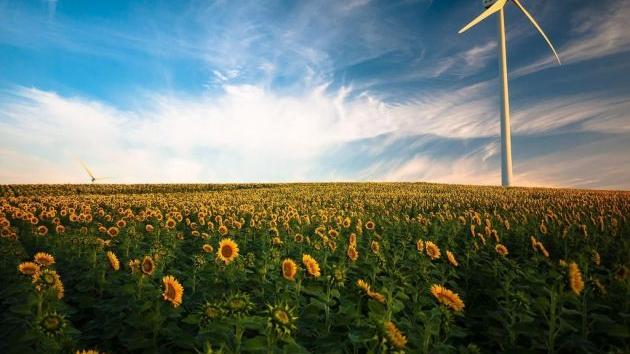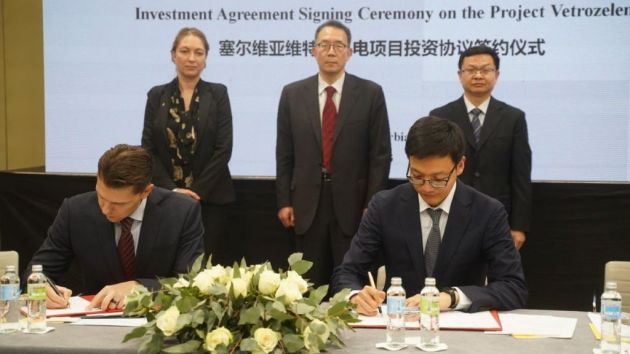Jovanka Atanacković, CWP Europe - In Serbia we are developing 1.6 GW RES projects, in Montenegro 400 MW
 Monday, 15.04.2024.
Monday, 15.04.2024.
 19:20
19:20

She also revealed to us whether the company will participate in other auctions where it expects greater competition, especially in the field of solar projects, why we need long-term power purchase agreements (PPAs) and what the public sector should do to attract investors to RES projects.
How many projects are you currently developing in Serbia, Montenegro and Bosnia and Herzegovina, and what is their total capacity?
CWP plays a significant role in Serbia`s transition to a more sustainable energy future, videnced by our involvement in seven projects currently in various stages of development. These projects boast a combined wind capacity of 1,100 MW and a solar capacity of 500 MW. Our portfolio consists of projects such as Vetrozelena, Solarina, Kima Solar, Vetrogon, Lederata Energy, Equinox Power, and Vida Power. Additionally, recognizing Montenegro`s significant potential for green energy production, we are developing the Montechevo solar power plant, boasting a capacity of 400 MW in our neighboring country.
After conducting the first auctions for the allocation of market premiums for RES, which in itself is a big step forward for the entire power sector, your company won the first bid with Vetrozelena project by offering the most competitive price. What does that mean in practice and what benefits does it bring to the citizens of Serbia?
The citizens of Serbia will benefit from these projects, as electricity sourced from domestic renewables will lead to lower electricity costs. At the inaugural auctions in Serbia, our company offered a more competitive price than the market rate and subsequently signed Power Purchase Agreements with the joint stock company “Elektroprivreda Srbije.” Moreover, all electricity generated at the Vetrozelena wind farm will remain within the Republic of Serbia, significantly bolstering the stability of domestic supply for end-users. The wind farm is expected to generate about 750 GWh annually, providing for the energy needs of more than 185,000 households with green electricity.
Near Zaječar, you are developing Solarina, a solar power plant with a capacity of 150 MW. As the current installed capacity of solar power plants in the country is less than 100 MW, what contribution will the development of this project have to the entire energy system of Serbia?
Primarily, Solarina will ensure the reliable production and supply of clean electricity to the citizens of Serbia. The calculated annual energy production of the Solarina solar park is about 270 GWh, which will fulfill the energy needs of over 65,000 households. The integration of Solarina solar park will significantly improve Serbia´s energy system and contribute to the achievement of national goals in the field of renewable energy sources and energy transition, including Serbia`s plan to integrate solar capacities of 1.73 GW by 2030. Moreover, Solarina will contribute to diversifying the energy mix and decreasing reliance on fossil fuels, particularly coal, thereby promoting sustainability and mitigating adverse environmental impacts.
How do you rate the cooperation with the public sector and the speed of obtaining all necessary permits?
Several significant factors have positioned Serbia as a leader in the region`s energy transition. These include the establishment of a streamlined system for issuing construction permits, the adoption of a special law for renewable energy sources, and the implementation of incentives allocated through auction procedures. The development of the Vetrozelena project, which is a result of four years of dedicated work, is an example of an efficient process and an indicator that Serbia is actively working to create favorable conditions for investing in renewable energy sources and attracting investments. Considering that the development of renewable energy projects is a complex process that lasts for several years, it is inevitable that there are challenges, which we also observe as an opportunity for improvement. Here I am primarily referring to the procedures related to connection to the grid, electricity placement and purchase.

Do you plan to participate in other auctions for the allocation of market premiums planned for this year and do you expect greater competition?
Through the development of projects, our company contributes to the improvement of the entire energy system of Serbia, as well as its transition towards renewable energy sources. One way we achieve this is through participation in auctions, where we carefully consider opportunities and identify projects that could be part of this initiative. Given the success of previous auctions, we anticipate increased competition, particularly in the field of solar projects. Nevertheless, we are prepared to face these challenges and are developing strategies that will enable us to remain competitive.
At the recently held Energy Transition Summit in Trebinje, in which you participated on behalf of CWP, we had the opportunity to hear the exchange of opinions of eminent experts, scientists and decision-makers from the field of energy, economy and industry regarding energy transition. What are your conclusions and what needs to be further improved in the relationship between investors and the state when it comes to the realization of high-power RES projects?
This year, the summit successfully opened a space for discussion and exchange of experiences. On that occasion, we reached numerous conclusions that certainly contribute to seeing the bigger picture when it comes to our industry. Firstly, it is crucial to emphasize the role of auctions for RES. Auctions are the best way to establish a long-term price for electricity. To develop such projects, long-term power purchase agreements (PPAs) are needed. That is why we rely on the public sector`s openness to foster a business environment conducive to the independence of renewable energy producers. Additionally, the key factors for investors are the security, predictability, and certainty provided by the environment in which they plan to develop their projects. Otherwise, when conditions are too restrictive and financially unjustified, investors will abandon their investment. All market participants contribute to sustainable economic growth, so it is essential that the public sector considers the private sector`s needs.
Socially responsible projects are an integral part of the company`s business. What are the main factors that drive such projects and what is their importance?
For us at CWP, the main driver of socially responsible activities is the desire for positive changes in the communities where we develop RES projects. By strengthening the values we cherish as a company, we strive to improve the lives of the people and the environment in which we operate. The creation of long-term relationships and trust that we build through our socially responsible activities with representatives and residents of local communities gives a completely new dimension to our business. I am happy that our efforts have been recognized. We strive to listen to the needs of the community, and based on that, we invest in different areas. I want to highlight our focus on supporting and educating young people, conserving the environment, empowering women, and investing in the development of art and culture.

Click here to see the entire Special Edition Newsletter
"Green (r)evolution - The future has begun"


 Izdanje Srbija
Izdanje Srbija Serbische Ausgabe
Serbische Ausgabe Izdanje BiH
Izdanje BiH Izdanje Crna Gora
Izdanje Crna Gora


 News
News










